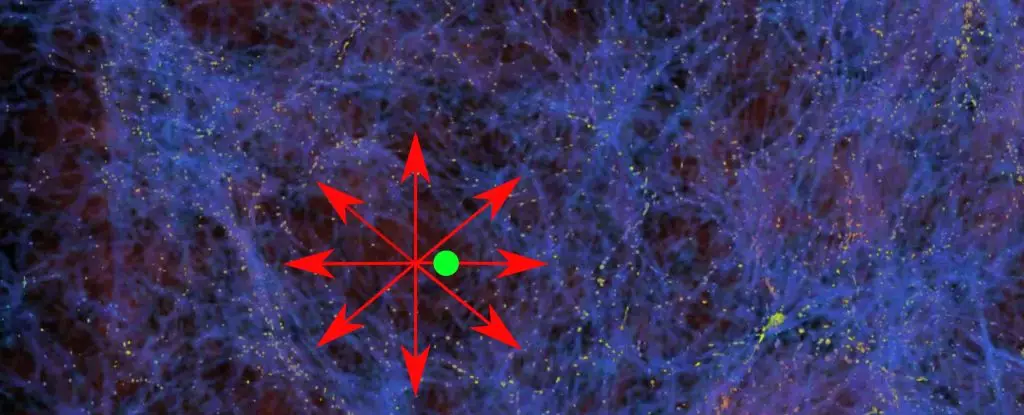When we cast our eyes upon the vast expanse of the cosmos beyond our own Milky Way galaxy, we are greeted by an awe-inspiring sight of countless galaxies scattered across the darkness like stars. At first glance, one might assume that galaxies are evenly distributed throughout space-time. However, recent observations have revealed a fascinating pattern: galaxies tend to cluster together, forming clusters, clumps, and filaments that resemble a cosmic web. These structures are formed due to the gravitational attraction between galaxies, giving rise to matter highways, superhighways, and nodes. Conversely, there are regions of significantly lower density, known as voids, which contain relatively few galaxies. One such void, called the Local Void, is where our Milky Way galaxy resides. Stretching across approximately 60 megaparsecs or around 200 million light-years, this bubble of space is only a fraction of a much larger underdensity known as the Local Hole, or Keenan-Barger-Cowie (KBC) supervoid, which spans an astonishing 600 megaparsecs. The existence of this supervoid challenges the standard model of cosmology, which asserts that matter should be uniformly distributed throughout the Universe.
Exploring the Hubble Tension
The Local Hole, although perplexing, might hold the key to resolving a long-standing problem known as the Hubble Tension. The Hubble Constant, denoted as H0, represents the rate at which the Universe is expanding. However, different measurement methods have yielded contradictory results. For instance, analyzing relics from the early Universe, such as the cosmic microwave background or frozen acoustic waves, suggests an expansion rate of approximately 67 kilometers per second per megaparsec. On the other hand, measuring the distances to more recent celestial objects like Type Ia supernovae and Cepheid variable stars, which have known brightness, leads to an expansion rate of around 73 kilometers per second per megaparsec. Astrophysicists from the University of Bonn, led by Sergij Mazurenko, hypothesize that the Local Hole’s influence could reconcile these disparities. They propose that the concentrations of matter surrounding the edges of the supervoid could locally accelerate galaxies, explaining the observed faster expansion rate in our vicinity, up to a distance of approximately three billion light-years. This unexpected finding challenges astrophysical theories, suggesting that our understanding of gravity, as described by the standard model, may need to be revisited.
Modified Newtonian Dynamics: An Alternative Perspective
Resolving the discrepancy between observations and theoretical predictions requires exploring alternative models of gravity. One such model is Modified Newtonian Dynamics (MOND), initially proposed four decades ago as an alternative to the dark matter theory, which aimed to address inconsistencies in the measurements of gravity within the Universe. While MOND does have its own limitations, it offers a valuable tool for pinpointing the gaps in our current understanding. According to MOND, the Local Hole’s implications become more manageable. However, it is crucial to acknowledge the limitations of MOND, as it is an evolving framework that requires further refinement. By combining insights from both MOND and the standard model, we might be able to forge a path forward, expanding upon Einstein’s theories rather than discarding them. As physicist Indranil Banik of St Andrews University aptly states, “Einstein is thought to have said that we cannot solve problems with the same thinking that led to the problems in the first place.”
The discovery of the Local Void and the Local Hole challenges our preconceived notions about the distribution of matter in the Universe. These cosmic voids have proven to be fruitful areas of research, offering valuable insights into the expansion of the Universe and potential modifications to our understanding of gravity. While the standard model of cosmology struggles to explain the existence of such significant underdensities, alternative theories like MOND provide a fresh perspective. By embracing these alternative frameworks and critically examining our current understanding, astrophysicists and cosmologists are poised to unravel the mysteries of the cosmos, leading us to a more comprehensive and accurate model of the Universe. The Local Hole’s potential role in resolving the Hubble Tension reminds us of the boundless wonders that await us as we continue our quest for knowledge and understanding in the realm beyond Earth.


Leave a Reply